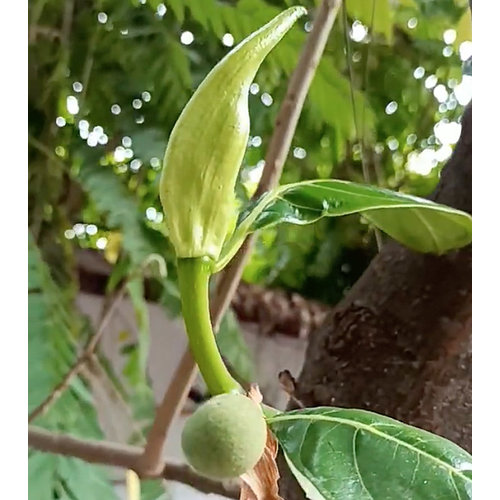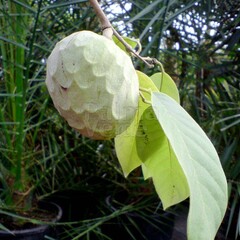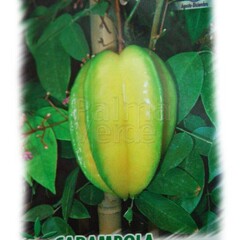Artocarpus heterophyllus also known as Jackfruit and Nangka is a tropical evergreen tree. The plant is very difficult to deliver and very special for the exotics lover.
Mainly found in Indonesia, India, Malaysia and the Philippines. The plant produces the largest fruits in the world. The fruits of older trees can weigh up to 55 kilograms.
Plants can produce smaller fruits for the first time after 3 years. These grow on the trunk (cauliflorie) just like the Brazilian grape tree.
The skin of the pear-shaped fruit is brown/green in color and set with points and very resistant to pests. When ripe, the flesh is yellowish and naturally it tastes slightly sweet and also smells sweet. The pulp is rich in vitamins such as B6, C and vitamin A and is also widely used as a meat substitute, especially the younger pulp. This has a more neutral taste. It is also widely used in curries. The seeds are also eaten as a snack.
The jackfruit is also referred to as the crop of the future because it can be an alternative to corn, wheat and grains.
The leaf is oval and glossy dark green on top and dull on the underside.
The self-pollinating inflorescence grows per sex from the leaf axil on slightly hairy shoots. The blossoms can grow up to 4 x 15 cm in older plants. Smaller in younger plants.
They are very beautiful, in the beginning a green bud from which a yellow blossom develops. Later it becomes orange/pink colored and star-shaped. The fruits arise from the female flower, the male flowers disappear after they have finished flowering. Both sexes grow alongside each other on the same shoots. At the beginning, the male flowers are rounded at the end, while the female flowers are pointed and somewhat smaller.
The plant can best overwinter in a light place at a temperature somewhere between +8ºC and +18ºC.
Winter hardiness zone 11 (8ºC).


























